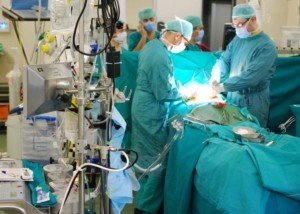
If you’ve been diagnosed with heart disease, does this mean that strenuous exercise is off-limits?
Is intense exercise even POSSIBLE with blocked arteries?
First of all, let’s define strenuous exercise. Some people think this is running 10 miles nonstop.
Others see it as deadlifting twice your body weight for five repetitions. There are multiple ways to define “strenuous exercise.”
As a fitness expert, I’ll define it as brief bursts of very intense activity. Thus, deadlifting for an 8-12 rep max, with only one minute of rest in between sets, is quite strenuous.
Dashing up a hill for 15 seconds five times with a three minute slow-walking rest in between each dash is a strenuous workout.
Heavy kettlebell swings that leave you breathing too hard at the end to complete sentences is strenuous exercise.
Can a person who’s been diagnosed with heart disease carry out any of these types of strenuous or very intense exercises?
“This largely depends on how well the coronary artery disease is being managed and other complications associated with CAD,” says Pilar Stevens-Cohen, MD, FACC, Department of Cardiology, South Nassau Communities Hospital.
CAD stands for coronary artery disease.
Dr. Stevens-Cohen continues, “Important things to note: Is the patient fully revascularized? Does the patient have normal left ventricular systolic function?
If the answer to both of these questions is yes, I would expect the patient to perform strenuous activity with no specific limitations.”
Revascularization refers to a bypass surgery. The heart’s left ventricle pumps or “squeezes” blood into the aorta great blood vessel to be distributed throughout the body. The strength of this pump is referred to as systolic function.
If the contraction to pump out this blood is weak, then there won’t be adequate blood supply throughout the body. So imagine the burden that intense exercise will place on a heart with weak ventricular systolic function.
Though this won’t necessarily damage the heart, the patient simply won’t have enough circulating oxygen to perform intense workouts.
Dr. Stevens-Cohen continues, “Not uncommonly however, we are unable to fully revascularize patients. Sometimes we cannot stent arteries due to vessel size or diffuse nature of coronary artery disease. There are vessels that are not amenable to stenting nor bypass.
“In these situations, we try and optimize with aggressive medical therapy. However, patients may experience angina or anginal equivalents with strenuous activity.”
Angina refers to chest pain. Shortness of breath may also result, though shortness is what will happen even when the fittest person performs strenuous exercise (that which results in considerable fatigue and heavy breathing soon after commencement).
However, the shortness of breath in a person with heart disease may occur during the warmup, making intense levels of exercise impossible.
“If there is significant pump damage (decreased systolic function) following a large infarction [heart attack] or diffuse coronary disease, patients may also be limited by symptoms and unable to engage in strenuous activity,” says Dr. Stevens-Cohen.

Dr. Stevens-Cohen is board certified in cardiology, nuclear cardiology, echocardiography and internal medicine.
 Lorra Garrick has been covering medical, fitness and cybersecurity topics for many years, having written thousands of articles for print magazines and websites, including as a ghostwriter. She’s also a former ACE-certified personal trainer.
Lorra Garrick has been covering medical, fitness and cybersecurity topics for many years, having written thousands of articles for print magazines and websites, including as a ghostwriter. She’s also a former ACE-certified personal trainer.
.

























